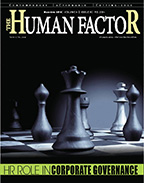Innovation Ecosystems Ron Adner (the Associate Professor of Business Administration, Tuck School of Business at Dartmouth, and author of the new book The Wide Lens: A New Strategy for Innovation), writes on the role of innovation ecosystems Issue Date - 01/04/2014 |
 For example, when Apple expanded from music players to phones, it carried over to the iPhone not just the technology and software that powered the iPod but also users’ entire music collections and its music store’s entire supplier base. This was not about creating switching costs (iPod users could continue to listen to their iPod while using Nokia phones). Rather, it was about leveraging existing relationships to create enhanced offers (by porting over your iTunes collection, Apple made the iPhone more valuable to you). By carrying over elements from the iPod ecosystem, Apple gave the iPhone a running start. In the rush to match the pieces, most of Apple’s rivals have missed the critical connections that draw the entire ecosystem together into a coherent whole. The big exception is Amazon. With the Kindle Fire, which was introduced few years back, it is pressing forward with a full-fledged ecosystem strategy. It is pairing substantial carry-over (the entire range of its e-book activities coupled with current users’ e-book libraries) with substantial investment. Amazon is sacrificing hardware margins to position the Fire as a low-priced tablet and is subsidising the participation of book publishers and movie studios in order to allow its core Amazon Prime customers to access books and videos with the device. It pursued this very same course with great success when it launched the original Kindle in 2007. The big difference is that the eReader market of 2007 was an open field; the tablet market of 2011 had a dominant giant. Jump-starting a competitive value proposition, this time around it required a significantly larger ecosystem footprint and, as Amazon’s investors know all too well, a significantly larger investment. Amazon is differentiating itself from Apple in terms of both its footprint and profit model. Apple captures the bulk of its profits the moment an iPad is sold, while its partners capture value over time as users consume services. In contrast, Amazon’s profits accrue over the lifetime of the customer with every on-platform purchase. In this regard, Amazon’s incentives seem more aligned with those of its media partners (‘we win together over time’) than Apple’s with its partners (‘I win first; you later... maybe’). Aligning, enticing, and – occasionally – subsidising partners are the new ante in the ecosystem game. Amazon and Apple will go down as case studies in alternative strategies for succeeding in ecosystems. Their product-focused rivals will illustrate what it means to be ‘stuck in the middle’. |
Ron Adner
|



